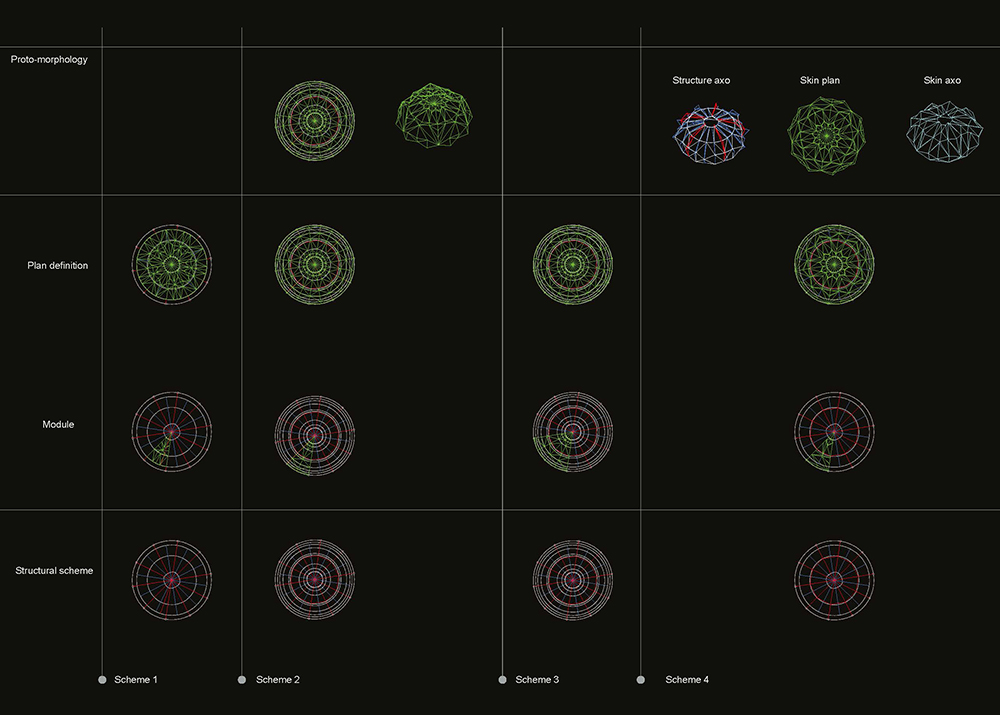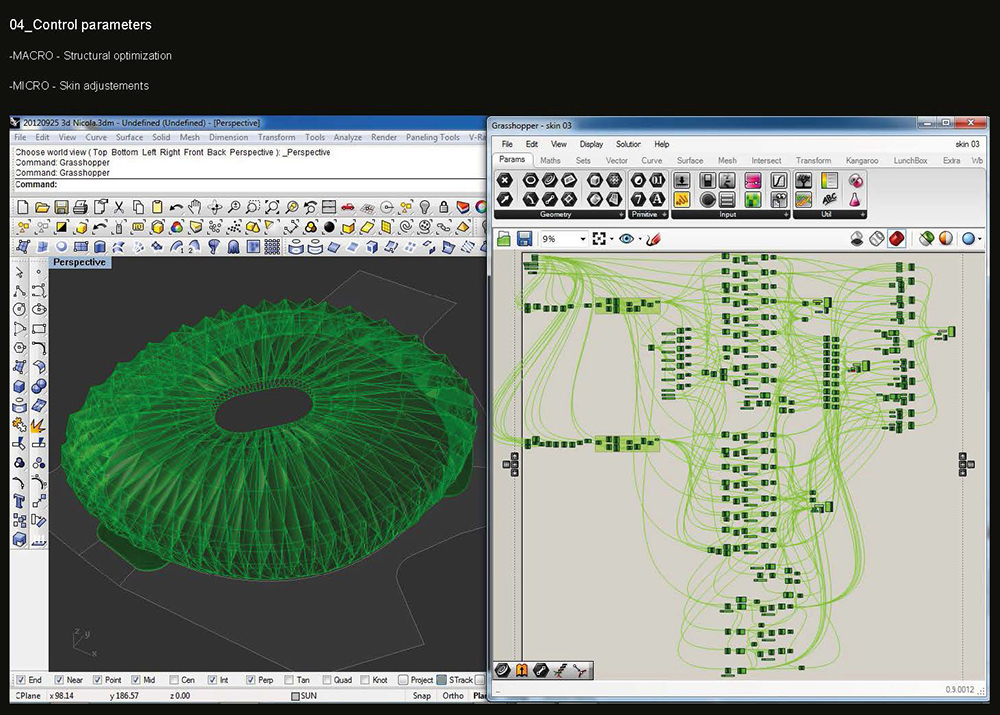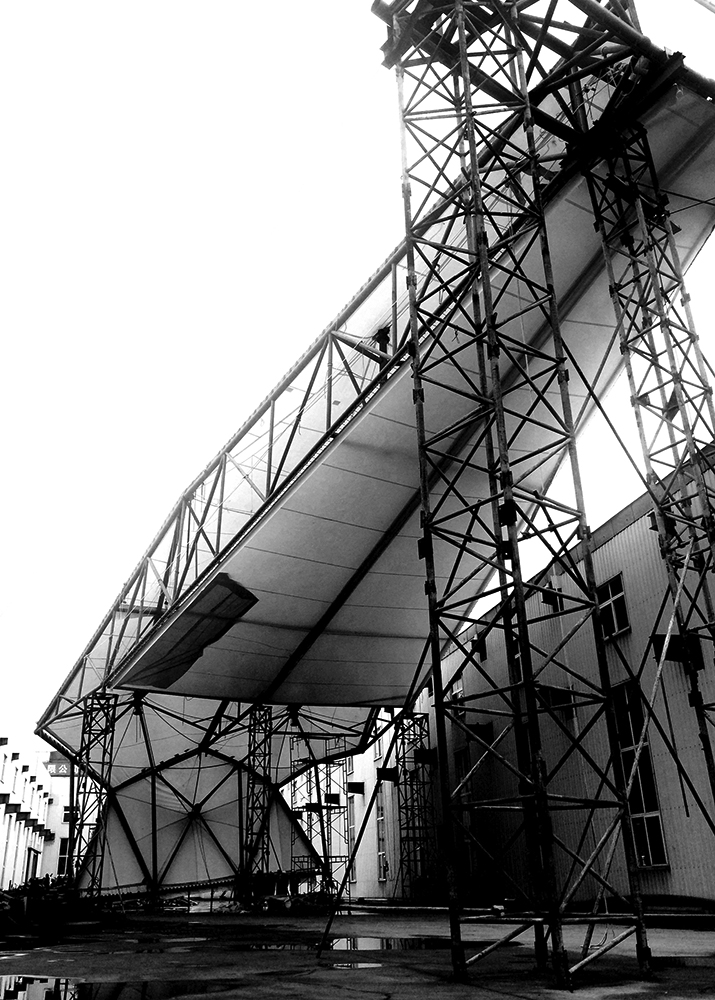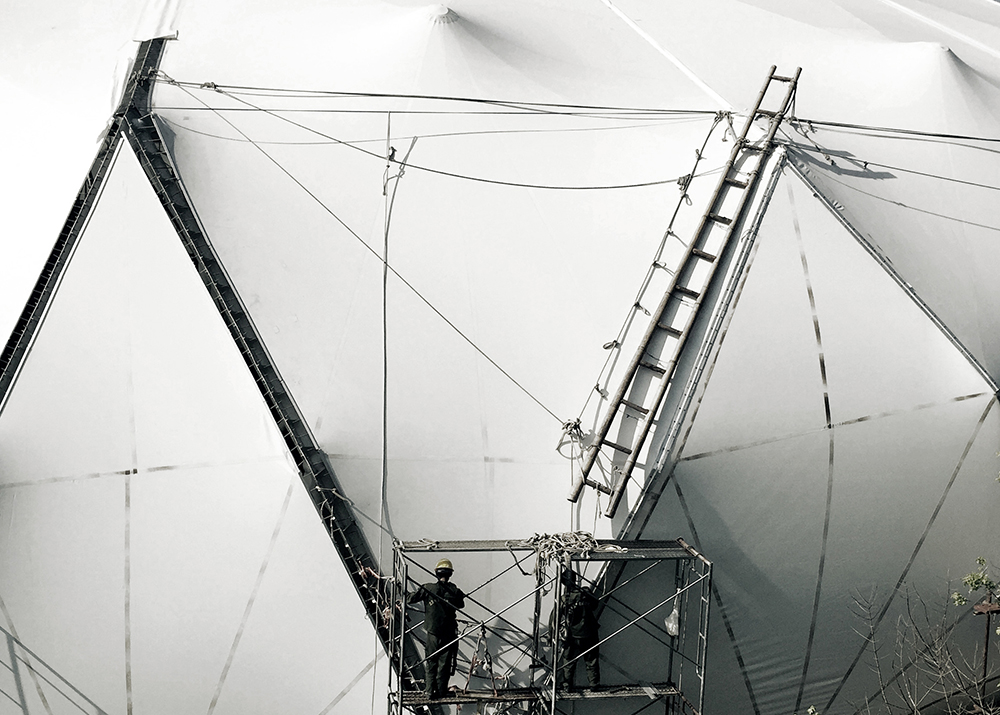dalian zoo pavilion
Year: 2012 - 2013
Size: 5,000 m2
Type: cultural
Status: completed
Location: Dalian, Liaoning, China
Client: Dalian Zoo
Partners in charge: Federico Ruberto, Nicola Saladino
Design team: Dong Liu
External collaborator: Dalian UD Institute

The Circus Pavilion for Dalian Zoo is the result of a collaboration between reMIX studio and Dalian UD Institute.
Our main tasks included:
- the geometric definition of the external and internal membrane
- the optimization of the roof structure
- the design of the access points
- the modeling of the adjacent topography
The institute decided the location of the pavilion within the park and the general interior layout. We were given a simple 3d model of the maximum envelope and were asked to propose an integral solution for the skin and the envelope structure. We believe in the possibility of combining a performative parametric approach and an intentional "handcrafted" design. Thus we explored a hybrid dialectics, in which the endless generative capacity of an algorithm, with its otherwise hardly achievable geometric precision, and the singularity of some punctual design moves, that can strongly influence the spatial quality and personal experience of the building, become a seamless dynamic assemblage.
Through a process of phylogenesis*, we studied different geometrical systems: initial basic patterns were expanded three-dimensionally and tested in their structural performance. The physical possibilities of our intervention relied in the combination of an optimized and yet dynamic structure and the implicit material properties of the membrane.
Through a constant feedback loop between geometric expressivity and structural performance, cost and construction-related evaluations we pre-selected two prototypes: the first one relied only on planar surfaces, the second on double curvature faces. We finally opted for the latter, as it allowed us to exploit the intrinsic elasticity of the membrane, through the control of its stress thresholds, and generate multiple relationships with the structure through different elements of compression and traction.
Finally, we designed also an internal membrane that provides thermal insulation and allows the complete enclosure of the pavilion. The relationship between the two textile layers is not fully linear as the interior skin detaches from the roof structure to mediate with the geometry of the perimetral walls and the stage, creating interesting dynamic effects.
* Phylogenesis defines the analytical study of the properties of an element within a series, its substantial characteristics, its constant traits and anomalies: in sum, it defines the material performances and the physical morphological and behavioral limits of a certain population in an evolutionary logic.
大连森林动物园表演场为reMIX事务所与大连都市发展设计院的合作项目。
我们在该项目中的主要任务包括:
-室内外膜结构的几何设计
-顶面结构优化
-场地入口设计
-建筑周边地形设计
设计院已初步确定了表演场在公园中的选址、室内空间布局和大致空间形态,我们需要在此基础上提供一个包括具体建筑形体和表皮膜结构的完整设计方案。我们坚信以功能为导向的参数化设计与存在主观意图的手动性设计这两种方式结合起来具有充分的必要性:我们通过编程,利用计算机的精确推导和运算速度对大量设计的可能性进行比较,同时设计师将在关键环节做出主观选择和决策,同时获得最大程度优化的几何结构以及个人主观性的空间体验。
通过phylogenesis分析法我们研究了多种不同的几何体系:由基础模块扩展到三维模型,并测试其结构性能。和膜结构厂商的密切配合使我们的设计逻辑能够加深对几何优化,动态结构和膜结构自身材料特性的理解。
以形体效果,结构性能,成本与施工难度评价多个设计方案,我们挑选了两种原型:第一种是平面表皮,第二种是双曲面结构。最终我们选择了后者,因其允许我们通过应力阈的控制能够利用皮膜固有的弹性,并通过不同组件受压和牵引产生与结构的多重关系。
最终我们还设计了内层的膜结构,以提供隔热功能,并完全将表演场围合起来。两层膜结构之间不是完全平行的,室内表皮偶尔和顶面分离,以与周围墙壁和表演场的形体相互协调,产生富有动态的空间效果。
(*)Phylogenesis:对于某一个因素在其所属系列中的性能与主要特点、恒定特征、异常变化等的解析。总之,是指在演变的逻辑下,一种对物质性能、物理形体以及目标人群的行为限度。











